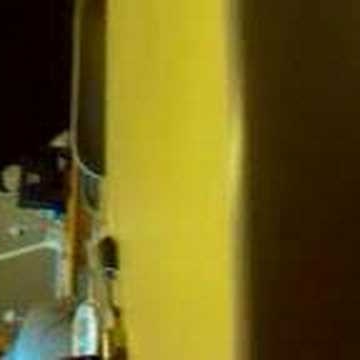Kurt Matthew Hunter
age ~54
from Federal Way, WA
- Also known as:
-
- Kurt M Hunter
- Curt M Hunter
Kurt Hunter Phones & Addresses
- Federal Way, WA
- 5603 Bridgeport Way W APT A, University Pl, WA 98467
- 7038 Yakima Ave, Tacoma, WA 98408 • 2534727522
- University Place, WA
- Mc Murray, PA
- Lacey, WA
- University Pl, WA
- Pittsburgh, PA
Work
-
Position:Educator
Education
-
Degree:Associate degree or higher
Isbn (Books And Publications)

Us Patents
-
Streaming-Media Input Port
view source -
US Patent:6801968, Oct 5, 2004
-
Filed:Nov 14, 2003
-
Appl. No.:10/713287
-
Inventors:Kurt M. Hunter - Redmond WA
-
Assignee:Microsoft Corporation - Redmond WA
-
International Classification:G06F 1314
-
US Classification:710 65, 709102, 709231, 370465, 370536
-
Abstract:The streaming-media input port provides an inexpensive way to get a video signal from an audio/video device (such as a camcorder) into a personal computer in a convenient streamable media format (e. g. , Windows Media Format). This streaming-media input port is an external hardware device that captures media content (i. e. , video and audio) input, compresses it, converts it to an immediately streamable media (ISM) format, and sends it to a coupled computer for immediate storage or use. Such a use is transmission over the Internet to a streaming media player. This use allows for a âliveâ transmission from a typical analog video camera. The computer receiving media data in the ISM format from the streaming-media input port does not need to decompress and recompress the media data. It may directly save to storage or transmit to the streaming media player. It may do so without any modifications to the format of the media data.
-
Digital Video Segmentation And Dynamic Segment Labeling
view source -
US Patent:7242809, Jul 10, 2007
-
Filed:Jun 25, 2003
-
Appl. No.:10/603565
-
Inventors:Kurt M. Hunter - Sammamish WA, US
Ian Cameron Mercer - Sammamish WA, US
Bret Ahlstrom - Woodinville WA, US -
Assignee:Microsoft Corporation - Redmond WA
-
International Classification:G06K 9/62
-
US Classification:382224, 382173, 382225, 37524016, 702 76, 386 98
-
Abstract:A method and system for segmenting video into an optimal set of video clusters that correspond loosely to one or more events, date ranges, time ranges, chapters or other logical segmentations of the digital video that is meaningful to the user. Video shots are selected from one or more video files on a computer-readable medium. The video shots are arranged in chronological order and a distance (e. g. , time gap) between each successive pair of the arranged video shots is determined. Video clustering are generated as function of the determined ‘distances’ and/or user input, and an optimal video clustering is identified. After the optimal video clustering is identified, a time span for each of the video clusters is determined and a label is generated for each cluster. The clusters are then displayed for the user to browse using the generated labels and thumbnails derived from the video clips, transferred to a separate medium for display on another computer or other electronic device (e. g. DVD-video player) or made available for the user or other software to manipulate further.
-
Remote Encoder System And Method For Capturing The Live Presentation Of Video Multiplexed With Images
view source -
US Patent:7383344, Jun 3, 2008
-
Filed:Feb 14, 2003
-
Appl. No.:10/366741
-
Inventors:Kurt M. Hunter - Sammamish WA, US
-
Assignee:Microsoft Corporation - Redmond WA
-
International Classification:G06F 15/16
-
US Classification:709231, 37524001, 3484231
-
Abstract:A system for use with a speaker providing audio and video in conjunction with images being provided by a podium computer responsive to the speaker as part of a live multimedia presentation. A device provides video signals and audio signals wherein the video signals correspond to the video provided by the speaker and the audio signals correspond to the audio provided by the speaker. A transmitter transmits a signal corresponding to a timing of images occurring simultaneously with the video and audio. A receiver receives the transmitted signal. A video channel converts the video signal into a digital video signal. An audio channel converts the audio signal into a digital audio signal. A receiver channel responsive to the receiver provides a timing signal corresponding to the transmitted signal and representing a timing of the images relative to the video and the audio. A media stream multiplexer multiplexes the digital video signal, the digital audio signal and the timing signal into an ISM (immediately stream-able media) format.
-
System And Method Of Transferring Dv Metadata To Dvd-Video Data
view source -
US Patent:20040120698, Jun 24, 2004
-
Filed:Dec 20, 2002
-
Appl. No.:10/325099
-
Inventors:Kurt Hunter - Sammamish WA, US
-
Assignee:Microsoft Corporation
-
International Classification:H04N005/781
-
US Classification:386/124000, 386/125000
-
Abstract:A method and system for converting DV (digital video) data having DV video frames and audio samples and having DV metadata into DVD-Video data. DV video frames and audio samples of streaming DV data is converted into corresponding DVD-Video video frames and audio samples and stored as DVD-Video data on a DVD recordable medium. The DV metadata of the streaming DV data is captured and stored as DVD-Video stream and Text Data (TXTDT) data of the DVD-Video data on the DVD recordable medium.
-
Remote Encoder System And Method For Capturing The Live Presentation Of Video Multiplexed With Images
view source -
US Patent:20080198878, Aug 21, 2008
-
Filed:Apr 16, 2008
-
Appl. No.:12/104041
-
Inventors:Kurt M. Hunter - Sammamish WA, US
-
Assignee:MICROSOFT CORPORATION - Redmond WA
-
International Classification:H04J 3/02
-
US Classification:370537
-
Abstract:A system for use with a speaker providing audio and video in conjunction with images being provided by a podium computer responsive to the speaker as part of a live multimedia presentation. A device provides video signals and audio signals wherein the video signals correspond to the video provided by the speaker and the audio signals correspond to the audio provided by the speaker. A transmitter transmits a signal corresponding to a timing of images occurring simultaneously with the video and audio. A receiver receives the transmitted signal. A video channel converts the video signal into a digital video signal. An audio channel converts the audio signal into a digital audio signal. A receiver channel responsive to the receiver provides a timing signal corresponding to the transmitted signal and representing a timing of the images relative to the video and the audio. A media stream multiplexer multiplexes the digital video signal, the digital audio signal and the timing signal into an ISM (immediately stream-able media) format.
-
Direct Connection With Side Channel Control
view source -
US Patent:20120147825, Jun 14, 2012
-
Filed:Dec 14, 2010
-
Appl. No.:12/967638
-
Inventors:Amer A. Hassan - Kirkland WA, US
Kurt M. Hunter - Sammamish WA, US
Brian Larsen - Bothell WA, US -
Assignee:Microsoft Corporation - Redmond WA
-
International Classification:H04W 72/00
-
US Classification:370329
-
Abstract:A wireless computer that pairs with a remote audio-video presentation device, such as a television. As a result of the pairing, a communication channel is established for the computer to transmit audio-video content for presentation through that device. Additionally, as part of the pairing, the computer and remote device select a side channel for communication of user commands. The wireless computer may display a user interface through which a user may input commands that control the manner in which the remote audio-video device presents the content. As a result, a user may use the wireless computer as a remote control for the audio-video device, controlling both the content presented and the manner in which it is presented. The side channel may use different frequencies than the channel used to communicate audio-video content, and may use very low power at frequencies in the digital TV spectrum.
-
Streaming-Media Input Port
view source -
US Patent:6675241, Jan 6, 2004
-
Filed:Jun 29, 2000
-
Appl. No.:09/608336
-
Inventors:Kurt M. Hunter - Redmond WA
-
Assignee:Microsoft Corporation - Redmond WA
-
International Classification:G06F 1314
-
US Classification:710 65, 709102, 709231, 370536, 370465
-
Abstract:The streaming-media input port provides an inexpensive way to get a video signal from an audio/video device (such as a camcorder) into a personal computer in a convenient streamable media format (e. g. , Windows Media Format). This streaming-media input port is an external hardware device that captures media content (i. e. , video and audio) input, compresses it, converts it to an immediately streamable media (ISM) format, and sends it to a coupled computer for immediate storage or use. Such a use is transmission over the Internet to a streaming media player. This use allows for a âliveâ transmission from a typical analog video camera. The computer receiving media data in the ISM format from the streaming-media input port does not need to decompress and recompress the media data. It may directly save to storage or transmit to the streaming media player. It may do so without any modifications to the format of the media data.
-
Direct Connection With Side Channel Control
view source -
US Patent:20160127423, May 5, 2016
-
Filed:Jan 12, 2016
-
Appl. No.:14/993786
-
Inventors:- Redmond WA, US
Kurt M. Hunter - Sammamish WA, US
Brian Larsen - Bothell WA, US -
International Classification:H04L 29/06
H04N 5/445
H04L 29/08
G06F 3/0484
H04W 76/02
H04W 4/00 -
Abstract:A wireless computer that pairs with a remote audio-video presentation device, such as a television. As a result of the pairing, a communication channel is established for the computer to transmit audio-video content for presentation through that device. Additionally, as part of the pairing, the computer and remote device select a side channel for communication of user commands. The wireless computer may display a user interface through which a user may input commands that control the manner in which the remote audio-video device presents the content. As a result, a user may use the wireless computer as a remote control for the audio-video device, controlling both the content presented and the manner in which it is presented. The side channel may use different frequencies than the channel used to communicate audio-video content, and may use very low power at frequencies in the digital TV spectrum.
Medicine Doctors

Kurt L. Hunter
view sourceSpecialties:
Family Medicine
Work:
Hunter Family Medical Clinic
2751 Commercial Way, Rock Springs, WY 82901
3073827414 (phone), 3073827396 (fax)
2751 Commercial Way, Rock Springs, WY 82901
3073827414 (phone), 3073827396 (fax)
Education:
Medical School
Creighton University School of Medicine
Graduated: 1997
Creighton University School of Medicine
Graduated: 1997
Procedures:
Allergen Immunotherapy
Circumcision
Destruction of Benign/Premalignant Skin Lesions
Electrocardiogram (EKG or ECG)
Pulmonary Function Tests
Vaccine Administration
Circumcision
Destruction of Benign/Premalignant Skin Lesions
Electrocardiogram (EKG or ECG)
Pulmonary Function Tests
Vaccine Administration
Conditions:
Acute Bronchitis
Acute Upper Respiratory Tract Infections
Bronchial Asthma
Disorders of Lipoid Metabolism
Abdominal Aortic Aneurysm
Acute Upper Respiratory Tract Infections
Bronchial Asthma
Disorders of Lipoid Metabolism
Abdominal Aortic Aneurysm
Languages:
English
Description:
Dr. Hunter graduated from the Creighton University School of Medicine in 1997. He works in Rock Springs, WY and specializes in Family Medicine. Dr. Hunter is affiliated with Memorial Hospital Of Sweetwater County.
Resumes

Airplane Health Management Customer Operations
view sourceLocation:
University Place, WA
Industry:
Aviation & Aerospace
Work:
Boeing
Airplane Health Management Customer Operations
Boeing Apr 2006 - Feb 2007
Project Manager, 787 Goldcare Operations Center
Alaska Airlines Jan 1998 - Apr 2006
Powerplant Program Management
Harbor Airlines 1996 - 1998
System Operations Controller
Airplane Health Management Customer Operations
Boeing Apr 2006 - Feb 2007
Project Manager, 787 Goldcare Operations Center
Alaska Airlines Jan 1998 - Apr 2006
Powerplant Program Management
Harbor Airlines 1996 - 1998
System Operations Controller
Education:
Peters Township High School
Community College of Beaver County
Associates
Community College of Beaver County
Associates
Skills:
Aerospace
Program Management
Commercial Aviation
Aircraft
Systems Engineering
Aviation
Process Improvement
Aircraft Maintenance
Engineering
Flights
Airworthiness
Avionics
Maintenance and Repair
Aeronautics
Airlines
Technical Support
Technical Analysis
Program Management
Commercial Aviation
Aircraft
Systems Engineering
Aviation
Process Improvement
Aircraft Maintenance
Engineering
Flights
Airworthiness
Avionics
Maintenance and Repair
Aeronautics
Airlines
Technical Support
Technical Analysis
Interests:
New Technologies
Amateur Radio
Personal Development
Investing
Amateur Radio
Personal Development
Investing

Aircraft Electrician
view sourceIndustry:
Construction
Work:
Nelson Electric
Electrical Apprentice
Two Brothers Construction Ltd
Framer
Aircraft Electrician
Electrical Apprentice
Two Brothers Construction Ltd
Framer
Aircraft Electrician

Kurt Hunter
view source
Kurt Hunter
view source
Kurt Hunter
view source
Kurt Hunter
view sourceYoutube
Classmates

Kurt Hunter
view sourceSchools:
St. Frances Cabrini School Allen Park MI 1985-1989
Community:
Dennis Mendrysa, Deena Dijoseph, Michael Galvan, Donald Same, Juanita Altobelli

Kurt Hunter
view sourceSchools:
Sitka High School Sitka AK 1979-1983
Community:
Valerie Baines, Spurgina Jeter, Margaret Sutter

Kurt Hunter
view sourceSchools:
North Allegheny Intermediate High School Pittsburgh PA 1967-1970
Community:
Linda Goshy, Joellen Theissen

Kurt Hunter
view sourceSchools:
Bendale High School Scarborough Morocco 1987-1991
Community:
Cameron Hutchinson, Brian Green, John Antoniadis

Kurt Hunter | Steven F. A...
view source
Kurt Hunter | Ponchatoula...
view source
Gateway School, New york,...
view sourceGraduates:
Kurt Hunter (2002-2006)

Kurt Hunter
view source
Kurt Hunter
view source
Kurt Hunter
view source
Kurt Hunter
view source
Kurt Hunter
view source
Kurt Hunter
view source
Kurt R Hunter
view source
Kurt Hunter
view sourceGoogleplus

Kurt Hunter
Work:
Self - Singer/Songwriter (2002)
Tagline:
Southern California Singer/Songwriter

Kurt Hunter (Pred Series)

Kurt Hunter
Tagline:
Follow your dreams to higher places!

Kurt Hunter

Kurt Hunter

Kurt Hunter

Kurt Hunter

Kurt Hunter
Myspace

Kurt Hunter
view sourceGet Report for Kurt Matthew Hunter from Federal Way, WA, age ~54





